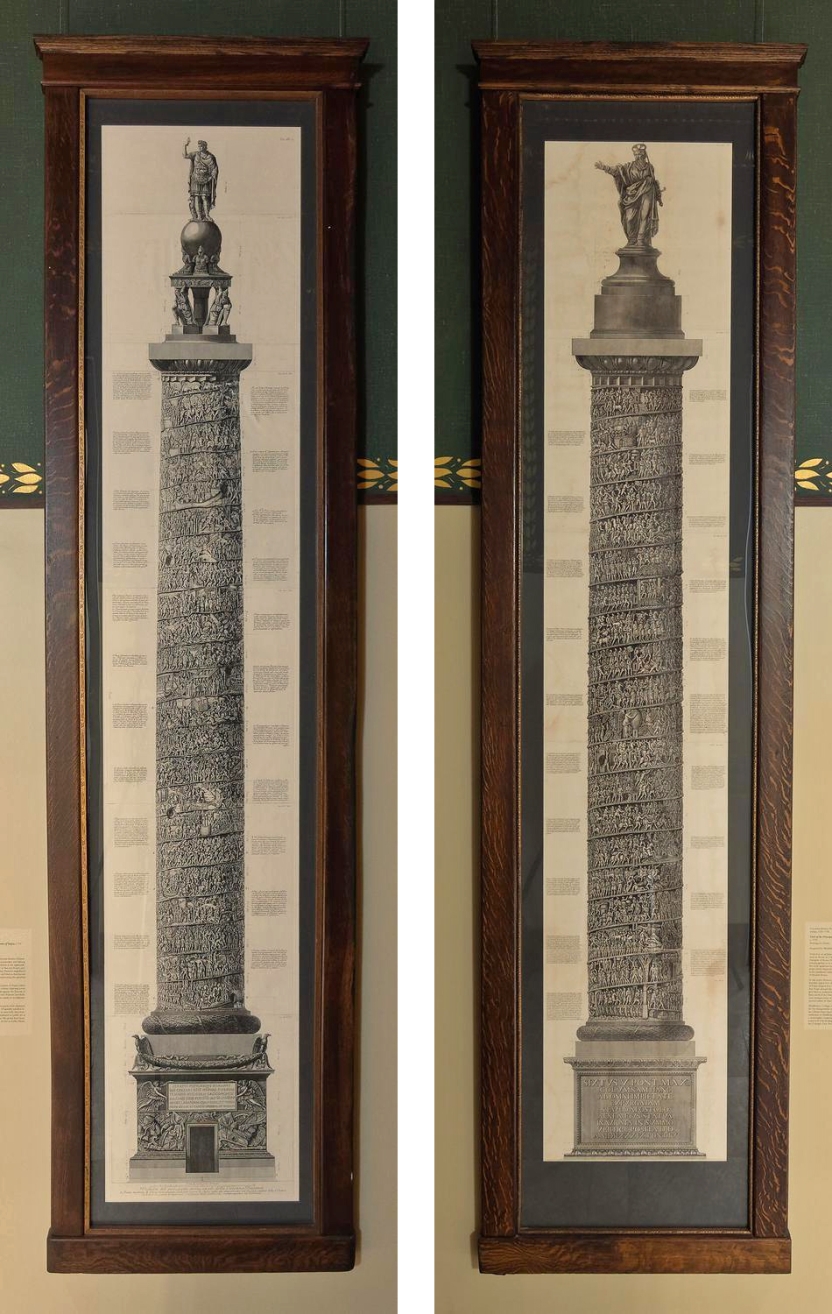Giovanni Battista Piranesi

Giovanni Battista Piranesi (Italian, 1720–1778)
View of the Principal Elevation of the Column of Trajan, 1774
View of the Principal Elevation of the Column of Marcus Aurelius, c. 1776
Etchings on paper, six sheets each.
Collection of Middlebury College Museum of Art, Vermont. Gift of an anonymous donor, 0.126, 0.127.
Location: Reading Room of the Axinn Center at Starr Library
Trained as an architect in his native Venice, Giovanni Battista Piranesi went to Rome in 1740 and became a prolific printmaker. A lifelong champion of Rome, he was an enthusiastic polemicist in the eighteenth-century debate as to whether Ancient Greece or Ancient Rome was the more significant source of Western civilization. These magnificent prints of the Imperial Columns of Trajan and Marcus Aurelius are to be considered within that context, visually underscoring the greatness of Ancient Rome.
Piranesi’s Elevation of the Column of Trajan (ruled 98–117 CE) shows the frieze that wraps around the entire column, depicting scenes from the two campaigns that Trajan undertook against the Dacians in what is now Romania. At the top of the column Piranesi fancifully restored the long-lost statue of the Emperor, standing on an elaborate base of the artist’s own invention.
The Column of Marcus Aurelius (ruled 161–180 CE) is a monument modeled after the Column of Trajan. On this column the frieze depicts scenes from the two campaigns that Marcus undertook against the barbarian tribes that inhabited lands north of the Danube. Piranesi, faithful to the original, includes the post-Antique statue of St. Paul that in 1588 had replaced the long-lost ancient statue of Marcus atop the column.
Middlebury College acquired the two Piranesi prints here displayed for the inauguration of Starr Library in 1900. They bear testimony to Middlebury’s longstanding commitment to public art as a meaningful component of higher education.
